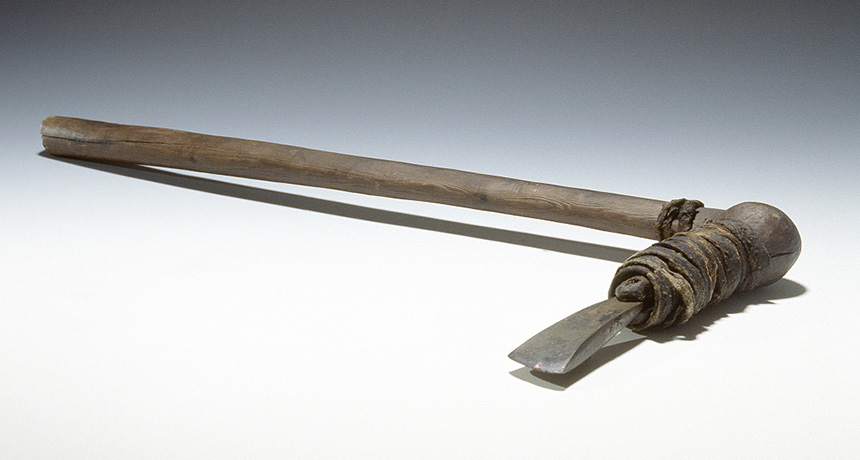Copper in Ötzi the Iceman’s ax came from surprisingly far away

Ötzi the Iceman’s copper ax was imported.
The mummy’s frozen body and assorted belongings were found in 1991 poking out of an Alpine glacier at Italy’s northern border with Austria. But Ötzi’s ax originated about 500 kilometers to the south in what is now central Italy’s Southern Tuscany region, say geoscientist Gilberto Artioli of the University of Padua in Italy and colleagues. It’s unclear whether Ötzi acquired the Tuscan copper as raw material or as a finished blade, the investigators report July 5 in PLOS ONE.
While mostly copper, the blade contains small concentrations of lead, arsenic, silver and more than a dozen other chemical elements. Researchers previously suspected the copper came from known ore deposits 100 kilometers or less from the site of the Iceman’s demise. But comparing the mix of different forms of lead, or isotopes, in the ax with that in copper ore from present-day deposits across much of Europe indicated that the ancient man’s blade came from Southern Tuscany. Other chemical components identified in the copper implement also point to a Southern Tuscan origin.
Earlier radiocarbon measurements of a wooden shaft, originally found attached to the copper blade by leather straps and birch tar, date the tool to roughly 5,300 years ago. Ötzi’s bone and tissue have yielded comparable radiocarbon age estimates (SN: 5/27/17, p. 13).
Archaeological studies indicate that copper mining and the production of copper items flourished in central Italy when Ötzi was alive, the researchers say. They propose that an extensive trade network funneled copper from Southern Tuscany to the Iceman’s Alpine territory.